Archives
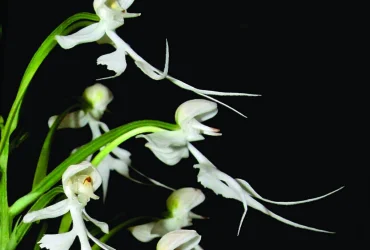 v7i2.172
v7i2.172ISSN: 1800-427X (print)
eISSN: 1800-427X (online)
DOI:10.47605/tapro.v7i2.172
Submitted date: 9 May 2014
Accepted date: 28 July 2014
Published date: 20 February 2015
Pp. 96–97.
Taxonomic status of Pavetta bourdillonii (Rubiaceae)
E.S.S. Kumar* & N. Mohanan
*Corresponding author. E-mail: santhoshkumares@gmail.com
The genus Pavetta L. has about 300 species distributed in the paleotropical regions of the world. Bremekamp (1934) laboriously studied this genus in details but his narrow species concept resulted in the recognition of many more species than can be justified taxonomically. He recognized 42 species for the Indian subcontinent, while Rout and Deb (1999) accepted only 25 species. Most of the characters used by Bremekamp to delimiting species, such as stem characters (green vs corky), shape and size of leaves, and arrangements of bacterial nodules in the leaves, were rejected by Rout and Deb. However, the position of the inflorescence (axillary vs. terminal) was found to be useful taxonomically by both parties.
Section Editor: James L. Reveal
eISSN: 1800-427X (online)
DOI:10.47605/tapro.v7i2.172
Submitted date: 9 May 2014
Accepted date: 28 July 2014
Published date: 20 February 2015
Pp. 96–97.
Taxonomic status of Pavetta bourdillonii (Rubiaceae)
E.S.S. Kumar* & N. Mohanan
*Corresponding author. E-mail: santhoshkumares@gmail.com
The genus Pavetta L. has about 300 species distributed in the paleotropical regions of the world. Bremekamp (1934) laboriously studied this genus in details but his narrow species concept resulted in the recognition of many more species than can be justified taxonomically. He recognized 42 species for the Indian subcontinent, while Rout and Deb (1999) accepted only 25 species. Most of the characters used by Bremekamp to delimiting species, such as stem characters (green vs corky), shape and size of leaves, and arrangements of bacterial nodules in the leaves, were rejected by Rout and Deb. However, the position of the inflorescence (axillary vs. terminal) was found to be useful taxonomically by both parties.
Section Editor: James L. Reveal
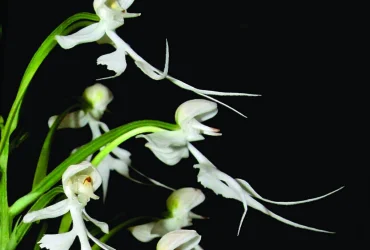 v7i2.171
v7i2.171ISSN: 1800-427X (print)
eISSN: 1800-427X (online)
DOI:10.47605/tapro.v7i2.171
Submitted date: 29 May 2014
Accepted date: 23 July 2014
Published date: 20 February 2015
Pp. 94–95, Pl. 6.
The lectotypification of Syzygium bourdillonii (Gamble) Rathakr. & N.C. Nair (Myrtaceae)
S.M. Shareef
*Corresponding author. E-mail: smshariftbgri@gmail.com
Based on two collections of Thomas Fulton Bourdillon (1849–1930) (nos. 596 & 859), made during 1895 on the Merchiston estate in the erstwhile Travancore State, James Sykes Gamble (1847–1925) erected a new species, Jambosa bourdillonii Gamble, in 1918. Rathakrishnan & Nair (1983) later proposed the combination, Syzygium bourdillonii. There was no other collection made until the rediscovery of the species from Agasthyamala of the Kerala region after 94 years. Subsequently, Murugan & Manickam (2006) recorded its occurrence in Tamil Nadu. Neither Gamble nor any subsequent authors designated a lectotype from the two known syntypes preserved in K (T.F. Bourdillon 596 & 859) and MH (T.F. Bourdillon 596). The Kew sheet of 596 (K000793900!) is designated here as lectotype and the duplicate at MH as an isolectotype.
Section Editor: James L. Reveal
eISSN: 1800-427X (online)
DOI:10.47605/tapro.v7i2.171
Submitted date: 29 May 2014
Accepted date: 23 July 2014
Published date: 20 February 2015
Pp. 94–95, Pl. 6.
The lectotypification of Syzygium bourdillonii (Gamble) Rathakr. & N.C. Nair (Myrtaceae)
S.M. Shareef
*Corresponding author. E-mail: smshariftbgri@gmail.com
Based on two collections of Thomas Fulton Bourdillon (1849–1930) (nos. 596 & 859), made during 1895 on the Merchiston estate in the erstwhile Travancore State, James Sykes Gamble (1847–1925) erected a new species, Jambosa bourdillonii Gamble, in 1918. Rathakrishnan & Nair (1983) later proposed the combination, Syzygium bourdillonii. There was no other collection made until the rediscovery of the species from Agasthyamala of the Kerala region after 94 years. Subsequently, Murugan & Manickam (2006) recorded its occurrence in Tamil Nadu. Neither Gamble nor any subsequent authors designated a lectotype from the two known syntypes preserved in K (T.F. Bourdillon 596 & 859) and MH (T.F. Bourdillon 596). The Kew sheet of 596 (K000793900!) is designated here as lectotype and the duplicate at MH as an isolectotype.
Section Editor: James L. Reveal
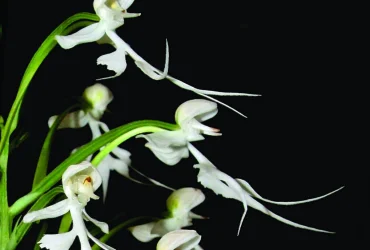 v7i2.170
v7i2.170ISSN: 1800-427X (print)
eISSN: 1800-427X (online)
DOI:10.47605/tapro.v7i2.170
Submitted date: 19 May 2014
Accepted date: 6 August 2014
Published date: 20 February 2015
Pp. 91–93.
Rediscovery of two Pyxine (Physciaceae) species from the Western Ghats
H. Biju*, R.G. Bagool & S. Nayaka
*Corresponding author. E-mail: drbijutbgri@gmail.com
The lichen genus Pyxine was established by Elias Fries in 1825 and it is a prominent member of the family Physciaceae. The genus Pyxine is mainly pantropical to subtropical with several species extending into temperate or oceanic regions, and comprises ca. 65 species. Index Fungorum (www.indexfungorum.org) holds a total of 162 records for Pyxine, which include 96 species and several infra-specific taxa. However, many taxa in that list need validation (e.g., P. consocians Vain. is mentioned as synonym of P. subcinerea Stirt.). In India, the genus harbors about 26 species, of which 10 are recorded for Kerala. Pyxine is characterized by dorsiventral, appressed, foliose thalli with linear radiating lobes, anatomically heteromerous, paraplectenchymatous upper cortex, white or yellow medulla, fibrous lower cortex, laminal apothecia with thalline or pseudothalline margin, epithecium K+ violet-purple, dark brown hypothecium, generally two-celled, mischoblastiomorphic brown spores, and simple paraphyses.
Section Editor: William R. Buck
eISSN: 1800-427X (online)
DOI:10.47605/tapro.v7i2.170
Submitted date: 19 May 2014
Accepted date: 6 August 2014
Published date: 20 February 2015
Pp. 91–93.
Rediscovery of two Pyxine (Physciaceae) species from the Western Ghats
H. Biju*, R.G. Bagool & S. Nayaka
*Corresponding author. E-mail: drbijutbgri@gmail.com
The lichen genus Pyxine was established by Elias Fries in 1825 and it is a prominent member of the family Physciaceae. The genus Pyxine is mainly pantropical to subtropical with several species extending into temperate or oceanic regions, and comprises ca. 65 species. Index Fungorum (www.indexfungorum.org) holds a total of 162 records for Pyxine, which include 96 species and several infra-specific taxa. However, many taxa in that list need validation (e.g., P. consocians Vain. is mentioned as synonym of P. subcinerea Stirt.). In India, the genus harbors about 26 species, of which 10 are recorded for Kerala. Pyxine is characterized by dorsiventral, appressed, foliose thalli with linear radiating lobes, anatomically heteromerous, paraplectenchymatous upper cortex, white or yellow medulla, fibrous lower cortex, laminal apothecia with thalline or pseudothalline margin, epithecium K+ violet-purple, dark brown hypothecium, generally two-celled, mischoblastiomorphic brown spores, and simple paraphyses.
Section Editor: William R. Buck
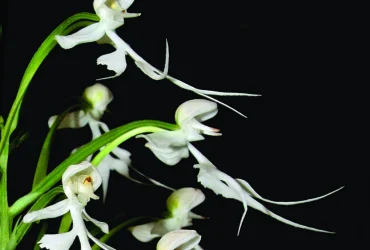 v7i2.169
v7i2.169ISSN: 1800-427X (print)
eISSN: 1800-427X (online)
DOI:10.47605/tapro.v7i2.169
Submitted date: 15 July 2014
Accepted date: 28 July 2014
Published date: 20 February 2015
Pp. 87–90.
Ceropegia jainii and C. rollae (Apocynaceae) at the brink of extinction
R. Kr. Singh
*Corresponding author. E-mail: rksbsiadsingh@yahoo.co.in
The highly economic, botanically curious genus Ceropegia L. (Apocynaceae Juss.) is native to India with the greatest number of species concentrated in Western Ghats which may be designated as the ‘cradle of Ceropegia’. Of the global 200 species of the Ceropegia, 58 species, two subspecies and four varieties are found in India, of which 35 species and one variety (ca. 56%) are endemic to Western Ghats where most are either critically endangered, endangered or vulnerable as per the IUCN categories and are also listed in the Red Data Book of Indian Plants. Of these, 50% (17 species and one variety) are strictly endemic to Maharashtra. Locally known as ‘Hanumangada’, ‘Kharpudi’, ‘Khartundi’, and ‘Tilori’, the genus is found mostly on plateaus and regions with gravelly and lateritic soils.
Section Editor: James L. Reveal
eISSN: 1800-427X (online)
DOI:10.47605/tapro.v7i2.169
Submitted date: 15 July 2014
Accepted date: 28 July 2014
Published date: 20 February 2015
Pp. 87–90.
Ceropegia jainii and C. rollae (Apocynaceae) at the brink of extinction
R. Kr. Singh
*Corresponding author. E-mail: rksbsiadsingh@yahoo.co.in
The highly economic, botanically curious genus Ceropegia L. (Apocynaceae Juss.) is native to India with the greatest number of species concentrated in Western Ghats which may be designated as the ‘cradle of Ceropegia’. Of the global 200 species of the Ceropegia, 58 species, two subspecies and four varieties are found in India, of which 35 species and one variety (ca. 56%) are endemic to Western Ghats where most are either critically endangered, endangered or vulnerable as per the IUCN categories and are also listed in the Red Data Book of Indian Plants. Of these, 50% (17 species and one variety) are strictly endemic to Maharashtra. Locally known as ‘Hanumangada’, ‘Kharpudi’, ‘Khartundi’, and ‘Tilori’, the genus is found mostly on plateaus and regions with gravelly and lateritic soils.
Section Editor: James L. Reveal
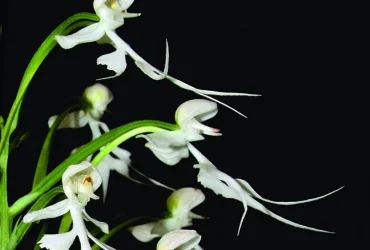 v7i2.168
v7i2.168ISSN: 1800-427X (print)
eISSN: 1800-427X (online)
DOI:10.47605/tapro.v7i2.168
Submitted date: 3 December 2014
Accepted date: 20 December 2014
Published date: 20 February 2015
Pp. 79–86.
HARVESTED PADDY FIELDS: AN UNDERSTUDIED ECOSYSTEM FROM THE NORTHERN WESTERN GHATS, INDIA
Sairandhri A. Lapalikar*, Ashish N. Nerlekar & Usha S. Yadav
*Corresponding author. E-mail: sairu1993@gmail.com
Abstract
This study was aimed at assessing the richness and obtaining allied ecological data of harvested rice fields at two sites around the town of Lonavala, northern Western Ghats, India. A total of ten fields were sampled (five at each site) using the quadrate method for the five post-harvest months. A total of 82 species were observed belonging to 74 genera of 31 families with Poaceae being the dominant family. Flora on the bunds and field proper was dissimilar. The natives and dicots species outnumbered the exotics and monocots respectively, and a gradual decline in the richness was observed from December through April. The PAST analysis indicated that some fields in the Tungi area were significantly different floristically from other fields. Presence of forests around the fields probably affects the post-harvest floristic diversity. Given that Indian farmers are experiencing a financial crisis, possible ways of gaining economic benefits out of this post-harvest floral diversity are discussed. Rice fields serve as a surrogate habitat for several species in areas disturbed due to anthropogenic activities and such studies provide baseline data for any future ecological studies.
Key words : exotic, floristics, native, Poaceae, post-harvest floral diversity, rice field
Section Editor: James L. Reveal
eISSN: 1800-427X (online)
DOI:10.47605/tapro.v7i2.168
Submitted date: 3 December 2014
Accepted date: 20 December 2014
Published date: 20 February 2015
Pp. 79–86.
HARVESTED PADDY FIELDS: AN UNDERSTUDIED ECOSYSTEM FROM THE NORTHERN WESTERN GHATS, INDIA
Sairandhri A. Lapalikar*, Ashish N. Nerlekar & Usha S. Yadav
*Corresponding author. E-mail: sairu1993@gmail.com
Abstract
This study was aimed at assessing the richness and obtaining allied ecological data of harvested rice fields at two sites around the town of Lonavala, northern Western Ghats, India. A total of ten fields were sampled (five at each site) using the quadrate method for the five post-harvest months. A total of 82 species were observed belonging to 74 genera of 31 families with Poaceae being the dominant family. Flora on the bunds and field proper was dissimilar. The natives and dicots species outnumbered the exotics and monocots respectively, and a gradual decline in the richness was observed from December through April. The PAST analysis indicated that some fields in the Tungi area were significantly different floristically from other fields. Presence of forests around the fields probably affects the post-harvest floristic diversity. Given that Indian farmers are experiencing a financial crisis, possible ways of gaining economic benefits out of this post-harvest floral diversity are discussed. Rice fields serve as a surrogate habitat for several species in areas disturbed due to anthropogenic activities and such studies provide baseline data for any future ecological studies.
Key words : exotic, floristics, native, Poaceae, post-harvest floral diversity, rice field
Section Editor: James L. Reveal
Hubungi Kami
The ultimate aim of the journal is to provide an effective medium for communication of the latest and best scientific information.
Copyright © 2020 Taprobanica. All Rights Reserved
Jasa Pembuatan Website by IKT




